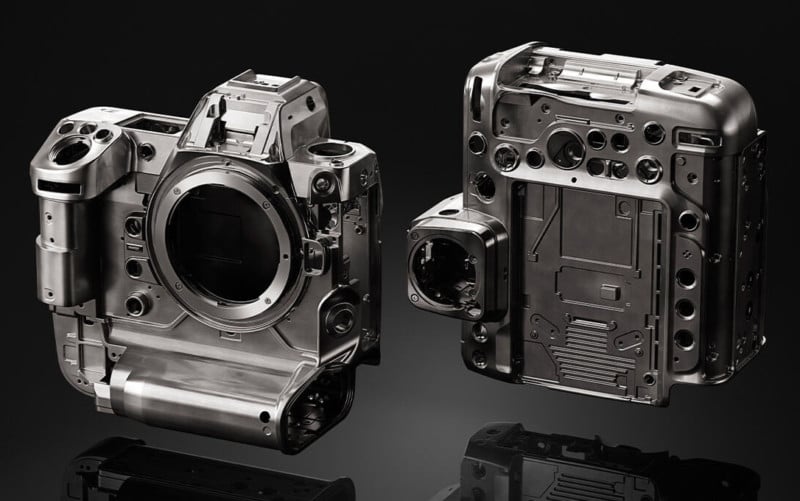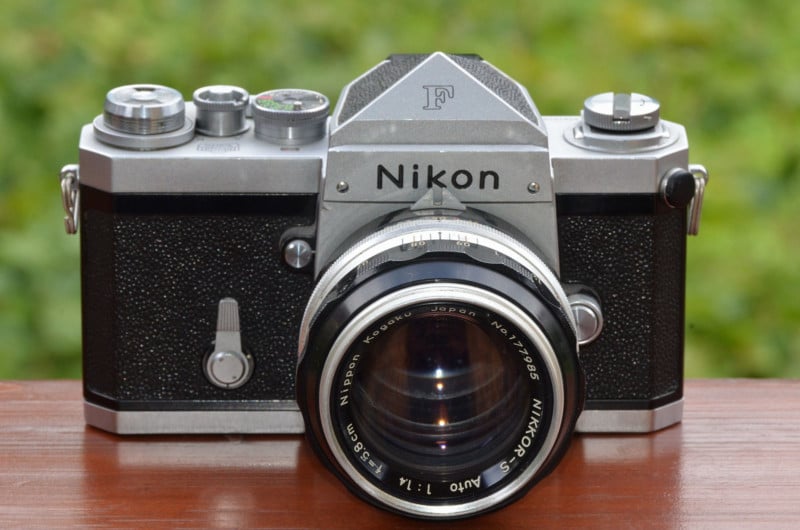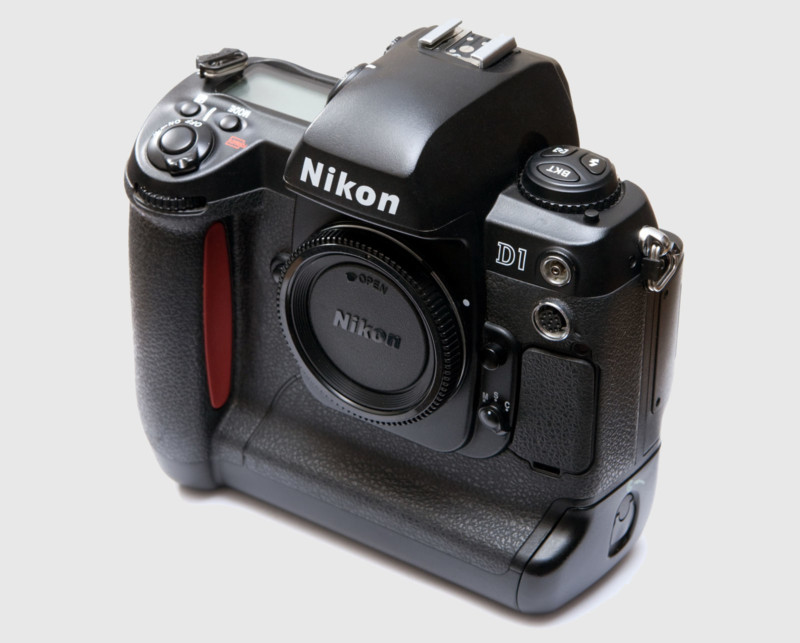Is the Z9 the Cheapest Pro Camera Nikon Has Released?
![]()
Nikon has been rightly praised for the top end specifications of the recently announced Z9. It has taken the mirrorless space race to the next level, regaining lost ground to sit at the genetic top of the proverbial camera tree. While $5,500 is clearly a lot of money, is the Z9 the cheapest pro-spec camera the company has released?
Nikon has long touted its credentials as a leading manufacturer of cameras that are designed to the highest specifications, for the toughest assignments, in the harshest environments. And – genuinely – outer space is no limit. However, when it comes to tough assignments, it has targeted working photojournalists who use and abuse their equipment on a daily basis, yet require the very best image quality and specifications to achieve the shots that other cameras can’t.
The “professional specification” camera was born out of this perceived need and, over time, evolved into the top-line models that now sit on the most expensive shelves. In particular, these models are designed for fast shooting with very rapid autofocus tracking, coupled with excellent low light performance and build quality of the highest precision and durability, often incorporating portrait/landscape grips with expanded battery capacity.
This, of course, all comes at a price, but when you need to get “that” shot, then money is, by-and-large, no object.
In terms of the Z9, Nikon has delivered on these requirements and then upped the ante for its competitors. The foundation for this is the magnesium alloy chassis which is water and dust resistant, incorporating that integrated vertical grip. This is similar to the D6, but by taking advantage of the mirrorless design, the body is now 20% smaller.

In-body vibration reduction is incorporated and synchronized with in-lens vibration reduction where available, offering up to 6 stops of shake compensation, married with a native ISO of 64 to 24,600. Fast autofocus and, importantly, subject tracking (including EyeAF) makes it competitive with the best and includes “Starlight” mode which enables autofocus down to -9.5 EV. Fast shooting is a requirement and the Z9 achieves a remarkable 20 fps in raw for over 1000 images and is able to hit 30 fps for JPEGs. It can up this to 120 fps at 11 megapixels, all with full autofocus.
What enables the Z9 to achieve those high frame rates is the new sensor and processor on board and the eyebrow-raising removal of the mechanical shutter. Mechanical shutters are generally faster than electronic ones; this is because sensor design has restricted the speed at which pixel data is retrieved, particularly when dealing with high resolutions. Nikon has managed to significantly improve readout performance to the point where it is confident of mitigating any rolling shutter effects and retaining an appropriate flash sync speed. This has the benefit of removing mechanical components which improves reliability and reduces cost.
And on cost, Nikon is very competitive with its contemporaries: the Z9 is $1,000 cheaper than the Sony Alpha 1 and Canon EOS-1D X Mark III, and $500 cheaper than the Canon EOS R3. It’s even $1,000 cheaper than its own Nikon D6!
Nikon’s foray into the pro-spec market began with the original 1959 F, which introduced the world to the F-mount, high-quality Nikkor lenses, and a specification that, at the time, made the mouth water. At a scant $330, it came with a fast 50mm lens and firmly placed Japan, and specifically Nikon, on the map of top-level camera manufacturers.

It wasn’t that the SLR was new as the basic concept had been around for quite some time, but Nikon managed to solve all the key problems and produce a design that was affordable. Crucially then it had nine lenses from day one, a 100% viewfinder, mirror lock-up, interchangeable focusing screens, 250 frame back, high build quality, motor drive, and a selection of viewfinders.
The original F was followed at approximately ten-year intervals introducing incremental improvements that maintained compatibility with the famed F-mount while introducing features such as auto-exposure and auto-focus as well as expanding the lens lineup.
Even as the F4 was launched in 1988, the digital barrier had already been broken with the Fujix D1S-P’s arrival offering digital end-to-end shooting. The race was now on to produce a digital interchangeable lens camera and Kodak was at the forefront.
Not surprisingly, the SLR was used as the “donor” shell with the digital sensor retro-fitted. Kodak used both Nikon and Canon SLR bodies over the next decade producing well-received, if eye-wateringly expensive, models (the DCS-100 used an F3 and cost $20,000!). To the surprise of the industry, Nikon beat everyone to the gun with the 1999 release of the D1, a DSLR built from the ground up by a single manufacturer: it was groundbreaking and expensive at $5,500.

The D1H ($3,100) and D1X ($3,900) began Nikon’s strategy of “normal” resolution and “high” resolution models, followed up with the D2H ($3,200) and D2X ($5,000), but it lost ground to Canon, which not only jumped rapidly to a full-frame sensor but was able to leverage the benefits of the EOS mount. The defining moment for Nikon came with the release of the D3 ($5,000), a truly groundbreaking camera (and particularly impressive sensor) that garnered a generation of shooters. It also bumped the price, with the D3X coming in at a remarkable $8,000.
Perhaps as the R&D for the D3 paid off, the incremental improvements in the D4 ($6,000), D5 ($6,500), and D6 ($6,500) meant that prices leveled off. The Z9 is therefore a very competitively priced model at $5,500 for what must have involved some significant development costs in its production.
With the pricing of the individual cameras in mind, is the Z9 the cheapest pro-spec model that Nikon has produced? Unfortunately, you can’t just compare launch prices because of the effect of the general rise in the price of products year-on-year (or inflation): the $330 price tag of the F is not comparable to the Z9! You can’t say unequivocally what a product in 1959 is worth in today’s money because products, salaries, and indeed countries have all changed differently over time, but we can estimate it using a generic price index.
I’ve picked the US Bureau of Labor Statistics Consumer Price Index (1967) for All Urban Consumers as the best option and then calculated the 2020 equivalent prices for all of Nikon’s pro-spec models. Perhaps unsurprisingly, the F ($2,930), F6 ($3,151), F2 ($3,515), and F3 ($3,691) come in as the cheapest. Film cameras are much simpler devices meaning the design and manufacturing costs should be lower than their digital equivalents. In fact, the F and F2 included a 50mm lens, which makes them cheaper still! It also shows how economical the F6 was.
The cheapest digital was the D2H ($4,501) and D1H ($4,531), then followed by the Z9 ($5,500) making it a genuinely well-priced Nikon model. At the other end of the scale, the D3X comes in at $9,616, followed closely by the D1 at $8,545 and then the D5 at $7,009. All of which shows a general clustering of models over the last decade in the $6,000-$6,500 range.
The pricing of the Z9 is an interesting marker in the sand for manufacturers. There has undoubtedly been extensive cost expended in the R&D for the range of mirrorless models we now see hitting the market, particularly for Nikon and Canon. That prices have remained flat, or have even dropped, reflects extreme competitiveness as manufacturers scramble to gain market share.
Removal of the mirror box and, for Nikon, the mechanical shutter have reduced some of the costs involved in manufacturing but these could well be offset by other component costs.
Whether prices stay flat remains to be seen, but it is a buyers market at the moment and there is no better exponent of this than the Z9.
Image credits: Header penny photo licensed from Depositphotos